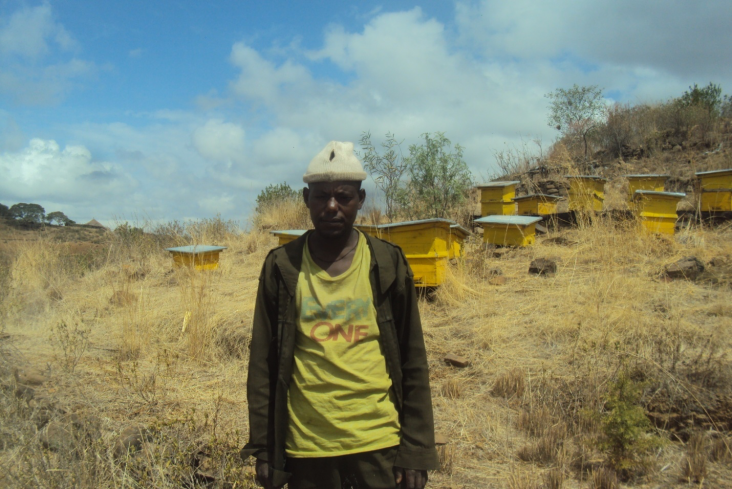
August 2017—In Ethiopia, the 2015-2016 El Niño-induced drought and consecutive poor rainy seasons triggered the worst water shortage the highlands had seen in more than 50 years.
But communities in Amhara Region fared better, thanks to USAID’s assistance through the Productive Safety Net Program. The program, which is led by the Government of Ethiopia and which USAID has supported for more than 10 years, provides regular transfers of cash or food to the most food insecure households in exchange for work on community projects.
Even in a year with good rains, the ragged terrain and scarce farmland in Ethiopia’s highlands make it difficult for farmers to grow enough food for their families. Years of poor natural resource management and overgrazing by livestock had degraded highland farmland, making it difficult for farmers to earn a living. A severe drought like that in 2015-2016 could sink families into extreme food insecurity.
To improve farmland in Amhara, USAID implementing partners Food for the Hungry (FH) and the Organization for Rehabilitation and Development in Amhara (ORDA) have worked since 2005 to help communities restore the natural vegetation and rehabilitate watersheds through the national safety net. The communities decided what land should be set aside for rehabilitation—preventing use by humans or livestock—and created community-designed plans.
In Bugna district, as early as October 2012, members of the community received training on soil and water conservation practices. To improve irrigation and restore soil conditions, the community planted trees and built physical structures, such as basins, terraces and dams.
Once the watershed was rehabilitated, the community handed over the 840 acres to groups of landless youth to manage and pursue small-scale, income-generating activities. Edget Behibret—a cooperative of youth groups—enabled the youth to work as beekeepers and loaned them approximately $875 to purchase 18 bee colonies.
In 2016, the group produced 64 kilograms of white honey and 120 kilograms of red honey for sale, earning a total of $508 to pay back toward their loan.
“The group is advancing and we feel that we are profitable,” says Mariye Amsalu, a father of three and member of the youth group. “We are all optimistic as we continue to care for the bee colony we are managing. We hope to efficiently use the income we are gaining from honey production to improve our livelihood.”
In the nearly five years since watershed work began in Bugna, the land has gone from degraded to productive, improving the lives of the youth and the resilience of their communities. In 2016, USAID activities improved nearly 10,800 hectares at 32 watershed sites in Amhara and, in partnership with FH and ORDA, reached more than 392,000 food insecure Ethiopians in 11 districts.
While USAID provided more than 680,000 metric tons of food assistance to people in Ethiopia to address the 2015-2016 drought, some communities better withstood the poor rains thanks to their participation in the safety net program. With approximately $100 million contributed annually, USAID reaches around 1.6 million people with food assistance through the program.
LINKS
Follow @USAIDEthiopia, on Flickr, on YouTube, on Facebook







Comment
Make a general inquiry or suggest an improvement.